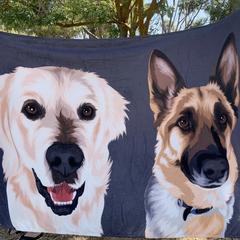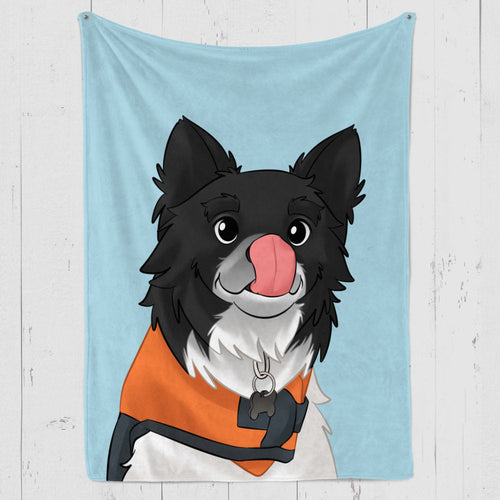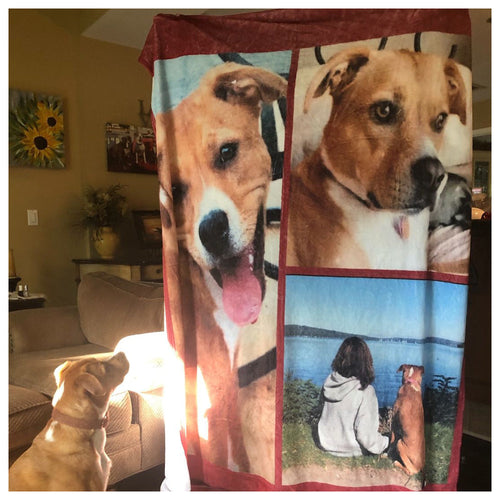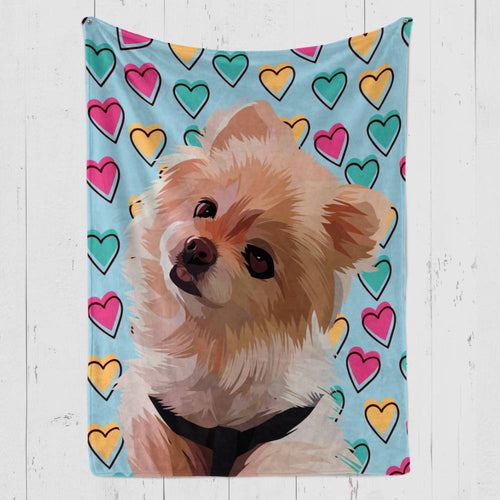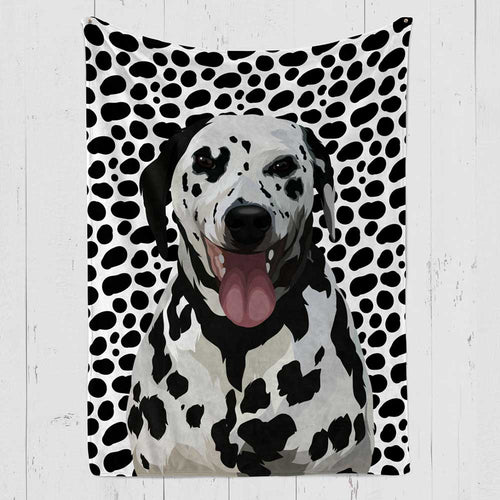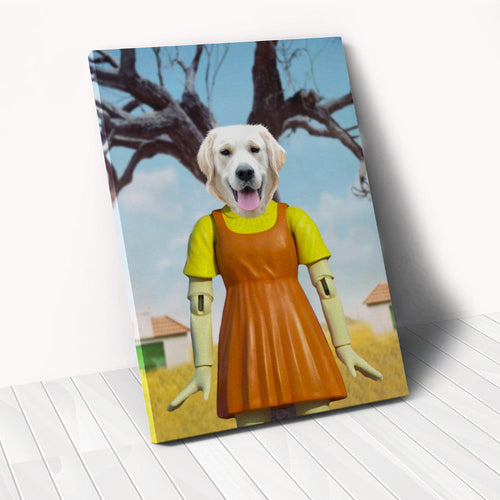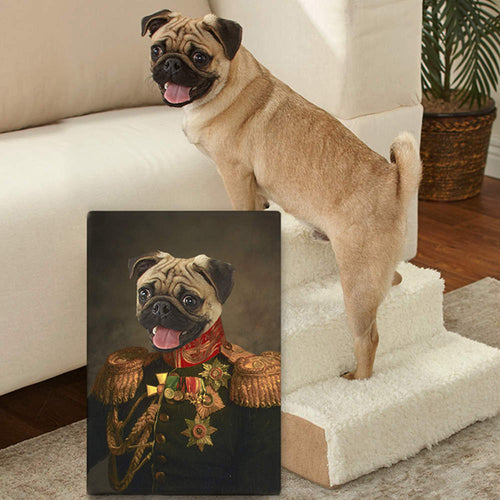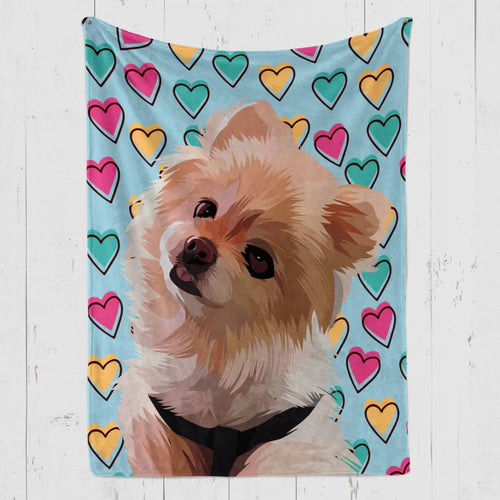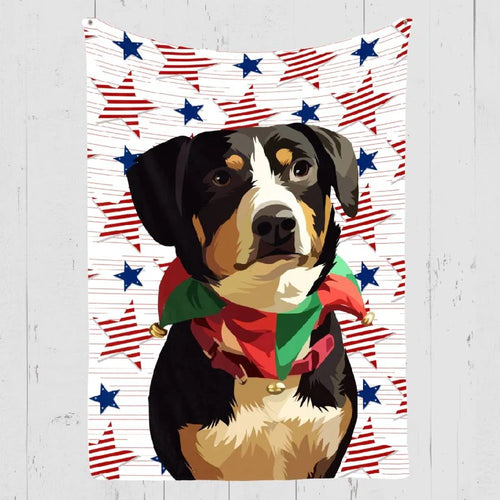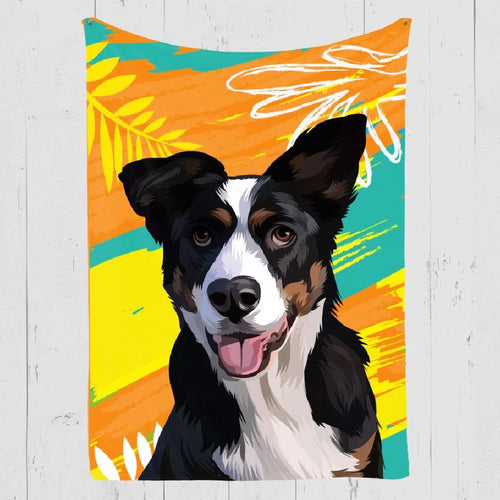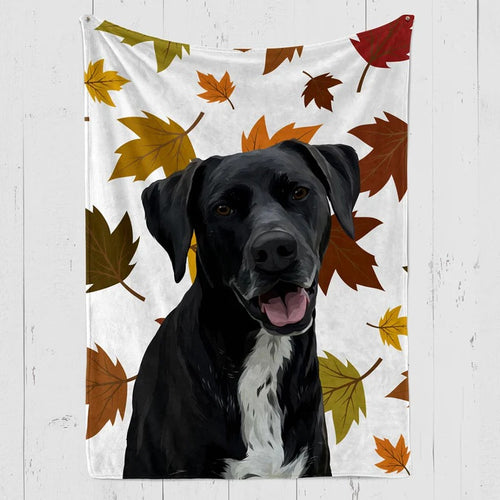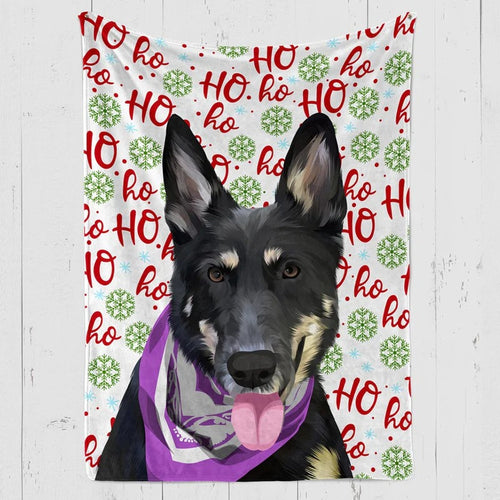
Have you ever caught a glimpse of your dog walking backwards? It can be amusing to see, and frequently, it is natural. However, occasionally it might point to deeper, more severe problems.
A dog walking backwards frequently does so as a learned behaviour or as a way to investigate their surroundings. However, it can also indicate other health problems, such as vestibular disease, eye problems, pain, or discomfort.
Why is my Dog walking backwards? Reasons

There are a few reasons why your dog walks backwards, they are:
1. Training
If your dog has been taught to walk backwards, you can consider this behaviour expected, and there is no need to be concerned. However, a trained dog will typically walk backwards when instructed. They are not likely to do this for fun.
A dog's instinct to walk backwards is only the strongest if a situation demands it. The dog is unsure of its direction of travel; let us face it, this is a bad way for anyone or anything to move.
Your puppy may start to walk backwards just for fun if you have been teaching it. It might also be for their amusement. Depending on the breed, they might do it to impress you and earn a treat!
There is no cause for concern if this is a behaviour you have taught your dog to exhibit when moving. They are merely doing what you instructed them to do, and occasionally the behaviour may manifest itself without your verbal commands.
2. Age
When it comes to coordination, puppies that are still very young are a mess. They move around wobbly as if four different brains controlled each of their legs. Puppies occasionally walk backwards to help them understand their bodies, develop strength and coordination, and have fun as young animals often do.
Watching a small dog walk backward is adorable, and it is not a problem. You probably remember when your toddler first learned to pedal their tricycle back if you have children. It’s just something children do. The fundamentals of movement are still being developed, and everything is brand-new and exciting.
3. Fear
Fear or anxiety is another frequent cause of your dog walking backward. They might be trying to hide from something that made them anxious or afraid. If this is the cause of your dog's sudden change in direction, your dog may cower, shiver, or even whimper.
Walking backward is frequently related to a fear or anxiety response. They might even bark or cry to let you know what makes them anxious. For example, a snake or other wild animal in the backyard could pose a severe threat that requires investigation, or it could be something simple that your dog needs to get used to, like an unfamiliar person.
4. Environment
A dog in a new environment may take a backward tour to take in the sights and get a feel for the area, much like puppies who learn to orient themselves by walking backward. Younger dogs and some breeds, such as Chihuahuas, are more likely to engage in this scouting behaviour.
Some dogs find that moving backward in a new environment helps them take in all the new stimuli, but they might also be doing it to feel more secure. Dogs, like people, tend to turn to what they know. If you see them moving backwards independently, they might do it to calm themselves during a difficult time. They may be trying to bargain if they do it for you a lot. A dog may believe that performing tricks to win your favour will result in them being returned to their previous home.
5. Neurological Reasons
This is the most alarming cause of a dog walking arched backward. You can tell your dog has strong reflexes if it exhibits a fear response. You can ensure that your dog is reassured and that the cause of its anxiety is dealt with.
On the other hand, disoriented behaviours might result from a neurological trigger. This could indicate that the brain is not receiving the proper signals, and your dog may have forgotten how to put one foot in front of the other. This should be checked out as soon as possible.
6. Pain
Your dog may have hurt their hind legs, and moving backwards while walking may help to reduce pain by relieving pressure from the injured area. This is frequently the case in older dogs, As arthritis and joint pain become more common.
If your dog is wincing while moving, you should consider its legs. That should show whether there is an injury that needs to be investigated. They might find it easier to move if they walk backward.
Walking Behavior in Dogs

You have most likely never paid close attention to how dogs walk. These animals take their first step forward with their back left leg, followed by their front left leg. Then their right back leg moves forward, followed by their front right leg.
Dogs walk in this manner because it provides the most stability and coordination. The first observations of canine walking behaviour were made in the early nineteenth century. Dogs walk in a semi-strut, whereas cats typically move slinkingly.
Leg Anatomy in Your Dog

Dogs have a flexible spine that allows them to stretch, which is extremely useful when running. Your dog's forelegs have two rotating bones that come in handy when turning. A dog's paw pads allow them to stay firmly planted on various surfaces.
Types of Gaits

A dog can exhibit four different gaits, which are as follows:
1. Walk:
When your dog is moving, you will typically notice a walking gait. This is when it moves slowly, casually strutting around.
2. Trot:
The trotting gait is distinguished by the placement of the feet diagonally, and it is slightly quicker than walking.
3. Canter:
Dogs do not often walk in this particular gait. The right-back leg of the log advances first, then the left-front leg, and finally, the right-front leg. Dogs behave this way when they need to be as agile as possible.
4. Gallop:
You can see it when your dog is in a full-on sprint because the gallop gait fully utilises its flexible spine. This stance has historically been used to hunt down prey.
Dog Walking: The Science Behind It

A dog walks by extending its back legs forward and the front foot on the same side. The other rear foot follows suit, followed by the front foot on that side. As a result, the walking pattern is right rear, right front, left rear, and left show and repeat.
Sometimes a dog walks with two feet on the ground, most times with four. Their normal gait is the only dog gait in which four feet can be on the ground simultaneously.
Frequently Asked Questions
Why is my dog walking backward instead of forward?
Sometimes, a dog finds walking backwards less painful and easier than forward. The causes of this behaviour may include arthritis, hip dysplasia, and a loose patella. While older dogs are more frequently affected, any dog could walk backwards due to a medical condition.
Is walking backward a normal behaviour in dogs?
Although a dog backing up occasionally can be considered normal behaviour, it is essential to realise that continuous or frequent backward movement is unusual in dogs and may be a sign of a problem. If it only occurs occasionally, there is no cause for concern. Walking backward frequently or persistently can be a sign of potential problems.
Are there any medical or neurological issues that could cause a dog to walk backwards?
A dog may walk backward due to certain medical conditions. Backward movement can be brought on by neurological issues in dogs that affect balance and coordination, such as vestibular syndrome or spinal cord injuries. It is crucial to call your veterinarian right away for an accurate diagnosis if your dog has recently experienced an injury or begun acting strangely.
Could anxiety or fear be a reason for my dog backing up?
Unusual behaviours, like dogs walking backward and shaking when they feel threatened or anxious, can happen because fear is a powerful motivator for them. This is especially true for dogs who naturally have higher anxiety levels or have previously experienced traumatic events.
For instance, your dog might walk backwards to avoid crossing a specific area of your home if it is afraid of loud noises, such as the roar of a vacuum cleaner or a noisy dishwasher—similar abnormal dog behaviours maybe if they are uneasy around particular people or animals.
What should I do if my dog suddenly starts walking backward, and it's not typical?
If your dog suddenly starts walking backward and you’re thinking, ‘Why is my dog walking backwards and panting?’, It is important to maintain your composure. Follow these solutions when your dog walks backward:
-
Observe How Your Dog Acts
Take a few steps back and pay close attention to how your dog is walking backward. Does he appear deliberate or perplexed? Is your dog whimpering or displaying any signs of discomfort? Does he show apparent signs of fear by tucking his tail between their legs?
-
Go to the vet with your dog.
If your dog is still walking backward, you should seek professional assistance. Your veterinarian can identify any potential physical conditions, such as arthritis, hip dysplasia, or a loose patella, and rule out any neurological problems. They can also offer advice on encouraging your dog to walk normally and in comfort.
-
Get your dog some expert instruction.
If the vet finds no medical problems, your dog's tendency to walk backward may be a behavioural problem. In this situation, professional training can aid your dog in breaking this bad habit.
Can certain breeds or age groups of dogs be more prone to walking backward?
Both yes and no. All dogs cross their diagonal legs when moving backwards, so they trot backwards slowly rather than walking. All breeds of dogs can walk backwards in the usual trot, but not all dogs can walk backward in the normal walking motion.
How are they different? The dog walks with four legs in the following order: right front left rear, left front, and right rear. The right front and left rear legs move together simultaneously while trotting, followed by the left front and right rear legs. A flying trot, which is a very fast trot, also has a suspension phase in between each pair of diagonal legs moving forward, as opposed to a slow trot, which always has two paws on the ground.
If my dog starts to walk backward, how can I train him to stop?
The best way to solve this problem is to have your pet well-trained on a leash. Your walking sessions will be much more enjoyable once you have mastered proper walking techniques and obedience training. When training your dog, use only positive reinforcement.
You should use the appropriate tools when walking your dog if they have not received the proper training yet. Choose a harness rather than a conventional or retractable collar. Dogs can pull less when wearing a harness because it gives them more control over their bodies and relieves pressure on their necks. A front-clip harness is a good choice because it is made to stop your dog from pulling.
When should I seek professional help or consult a veterinarian about my dog's backward walking behaviour?
Consult your veterinarian if your dog is walking backwards or showing abnormal dog behaviours or distress signs. Give them all the information you have gathered to help them understand what is happening.
Conclusion
Even though dogs do not always move backwards as a sign of trouble, it is important to watch out for any strange changes in their behaviour. If your dog walks backward more often, a more serious issue could occur. However, a dog walking backward is not the only behaviour that can alert you to a problem with your dog. Actions like panting and pacing may indicate that you should talk to your vet about your dog's behaviour.
Sources
- Labradoodle Home - https://labradoodlehome.com/why-is-my-dog-walking-backwards/
- Pawsome - https://www.pawesome.net/can-dogs-walk-backwards/
- Petsoid - https://petsoid.com/why-is-my-dog-walking-backwards/
- Oodle Life - https://www.oodlelife.com/can-dogs-walk-backwards/
- The Dune Dogs - https://thedunedogs.com/what-causes-a-dog-to-walk-backwards/
- Pet Zone - https://petzone.blog/why-does-my-dog-walk-backwards/
- The Dog Stop - https://thedogstop.com/blog/common-bad-dog-walking-habits/
Recommended Articles :
Latest Review on Woof Blankets
To have such a masterpiece by my side every day is a gift for me and my memories with Rex. Thank you WoofBlankets for such an opportunity to recreate his image on a blanket.Lara o’ Miguel US, California

COLLECTION WORTH EVERY PENNY
BEST SELLERS
-
Woofy Single Color Custom Pet Blanket
![Woofy Single Custom Pet Blanket – Woof Blanket]()
- -41%
BlanketsSHOP NOW- Regular price
- from $64.95
- Sale price
- from $64.95
- Regular price
-
$109.95 - Unit price
- per
Sold out -
Exclusive Christmas Custom Pet Blanket
![Exclusive Custom Pet Blanket]()
- -39%
BlanketsSHOP NOW- Regular price
- from $69.95
- Sale price
- from $69.95
- Regular price
-
$114.95 - Unit price
- per
Sold out -
Christmas Custom Pet Blanket
![Christmas Custom Pet Blanket - Custom Dog Blankets]()
- -40%
BlanketsSHOP NOW- Regular price
- from $69.95
- Sale price
- from $69.95
- Regular price
-
$115.95 - Unit price
- per
Sold out -
Watercolor Pet Portraits
![]() SHOP NOW
SHOP NOW- Regular price
- from $59.95
- Sale price
- from $59.95
- Regular price
-
- Unit price
- per
Sold out -
Woofy Christmas Custom Dog Blanket
![Woofy Christmas Custom Dog Blanket]()
- -39%
BlanketsSHOP NOW- Regular price
- from $69.95
- Sale price
- from $69.95
- Regular price
-
$114.95 - Unit price
- per
Sold out -
Modern Pet Owner Portrait
![]()
- -32%
CanvasSHOP NOW- Regular price
- from $84.95
- Sale price
- from $84.95
- Regular price
-
$124.95 - Unit price
- per
Sold out -
Woof Splash Custom Pet Blanket
![Woof Splash Custom Pet Blanket]()
- -39%
BlanketsSHOP NOW- Regular price
- from $69.95
- Sale price
- from $69.95
- Regular price
-
$114.95 - Unit price
- per
Sold out -
The Admiral - Custom Pet Portrait
![The Admiral - Custom Pet Portrait Online]()
- NEW
- -25%
CanvasSHOP NOW- Regular price
- from $59.95
- Sale price
- from $59.95
- Regular price
-
$79.95 - Unit price
- per
Sold out -
Wings of Loyalty - Custom Pet Portrait
![]()
- NEW
CanvasSHOP NOW- Regular price
- from $59.95
- Sale price
- from $59.95
- Regular price
-
- Unit price
- per
Sold out -
Pet Memorial Custom Photo Collage Blanket
![Personalized pet memorial quilt with photos]()
- -41%
BlanketsSHOP NOW- Regular price
- from $64.95
- Sale price
- from $64.95
- Regular price
-
$109.95 - Unit price
- per
Sold out -
Celestial Paws - Custom Pet Portrait
![]() CanvasSHOP NOW
CanvasSHOP NOW- Regular price
- from $59.95
- Sale price
- from $59.95
- Regular price
-
- Unit price
- per
Sold out -
The Loyal Soul - Custom Pet Portrait
![]()
- NEW
SHOP NOW- Regular price
- from $59.95
- Sale price
- from $59.95
- Regular price
-
- Unit price
- per
Sold out -
Cartoonized Pet Portraits (New)
![Cartoonized Pet Custom Portraits Online]()
- -36%
SHOP NOW- Regular price
- from $59.95
- Sale price
- from $59.95
- Regular price
-
$93.95 - Unit price
- per
Sold out -
The French Sailor - Custom Pet Portrait
![]()
- -25%
CanvasSHOP NOW- Regular price
- from $59.95
- Sale price
- from $59.95
- Regular price
-
$79.95 - Unit price
- per
Sold out -
The Policeman - Custom Pet Portrait
![]()
- NEW
- -25%
CanvasSHOP NOW- Regular price
- from $59.95
- Sale price
- from $59.95
- Regular price
-
$79.95 - Unit price
- per
Sold out -
The General - Custom Pet Portrait
![]()
- NEW
- -25%
CanvasSHOP NOW- Regular price
- from $59.95
- Sale price
- from $59.95
- Regular price
-
$79.95 - Unit price
- per
Sold out -
Woof Love Custom Pet Blanket
![Woof Love Custom Pet Blanket]()
- -39%
BlanketsSHOP NOW- Regular price
- from $69.95
- Sale price
- from $69.95
- Regular price
-
$114.95 - Unit price
- per
Sold out -
Summer Time Custom Pet Blanket
![Summer Time Custom Pet Blanket]()
- -39%
BlanketsSHOP NOW- Regular price
- from $69.95
- Sale price
- from $69.95
- Regular price
-
$114.95 - Unit price
- per
Sold out -
The Ambassador - Custom Pet Portrait
![The Ambassador - Custom Pet Portrait Online]()
- NEW
- -25%
CanvasSHOP NOW- Regular price
- from $59.95
- Sale price
- from $59.95
- Regular price
-
$79.95 - Unit price
- per
Sold out -
Fall In Love Custom Pet Blanket
![Fall In Love Custom Dog Blanket]()
- NEW
- -39%
BlanketsSHOP NOW- Regular price
- from $69.95
- Sale price
- from $69.95
- Regular price
-
$114.95 - Unit price
- per
Sold out -
The Classy Lady - Custom Pet Portrait
![The Classy Lady]()
- NEW
- -25%
CanvasSHOP NOW- Regular price
- from $59.95
- Sale price
- from $59.95
- Regular price
-
$79.95 - Unit price
- per
Sold out -
The Duke - Custom Pet Portrait
![The Duke - Custom Pet Portrait]()
- NEW
- -25%
CanvasSHOP NOW- Regular price
- from $59.95
- Sale price
- from $59.95
- Regular price
-
$79.95 - Unit price
- per
Sold out -
Dog In Suit- Custom Pet Portrait
![Dash Dog In Suit- Custom Pet Portrait Online]()
- NEW
- -25%
CanvasSHOP NOW- Regular price
- from $59.95
- Sale price
- from $59.95
- Regular price
-
$79.95 - Unit price
- per
Sold out -
The Princess - Custom Pet Portrait
![]()
- NEW
- -25%
CanvasSHOP NOW- Regular price
- from $59.95
- Sale price
- from $59.95
- Regular price
-
$79.95 - Unit price
- per
Sold out -
Modern Pet Portrait with One Mug
![Modern Pet Portrait with One Mug]()
- -25%
Print MaterialSHOP NOW- Regular price
- from $99.95
- Sale price
- from $99.95
- Regular price
-
$133.95 - Unit price
- per
Sold out -
The Aristocrat - Custom Pet Portrait
![The Aristocrat - Custom Pet Portrait At Best Price]()
- NEW
- -25%
CanvasSHOP NOW- Regular price
- from $59.95
- Sale price
- from $59.95
- Regular price
-
$79.95 - Unit price
- per
Sold out -
Single Color Custom Blanket with 1 Mug
![Single Color Custom Blanket with 1 Mug]() BlanketsSHOP NOW
BlanketsSHOP NOW- Regular price
- from $99.95
- Sale price
- from $99.95
- Regular price
-
- Unit price
- per
Sold out -
Single Color Custom Blanket with 2 Pillows
![Single Color Custom Pet Blanket with 2 Pillows]()
- -21%
BlanketsSHOP NOW- Regular price
- from $99.95
- Sale price
- from $99.95
- Regular price
-
$125.95 - Unit price
- per
Sold out -
The Dog in Suit Custom Pet Mug
![]()
- -20%
MugsSHOP NOW- Regular price
- $39.95
- Sale price
- $39.95
- Regular price
-
$49.95 - Unit price
- per
Sold out -
Angel Custom Pet Mug
![]()
- -20%
MugsSHOP NOW- Regular price
- $39.95
- Sale price
- $39.95
- Regular price
-
$49.95 - Unit price
- per
Sold out -
This Human Belongs To - Custom Pet Mug
![]()
- NEW
- -20%
MugsSHOP NOW- Regular price
- $39.95
- Sale price
- $39.95
- Regular price
-
$49.95 - Unit price
- per
Sold out -
It's Not Dog Hair Custom Pet Mug
![]()
- NEW
- -20%
MugsSHOP NOW- Regular price
- $39.95
- Sale price
- $39.95
- Regular price
-
$49.95 - Unit price
- per
Sold out -
My Dog Is My Valentine Custom Pet Mug
![]()
- NEW
- -20%
MugsSHOP NOW- Regular price
- $39.95
- Sale price
- $39.95
- Regular price
-
$49.95 - Unit price
- per
Sold out -
3 Photos With Message Custom Pet Mug
![]()
- NEW
- -20%
MugsSHOP NOW- Regular price
- $39.95
- Sale price
- $39.95
- Regular price
-
$49.95 - Unit price
- per
Sold out -
My Valentine Has Four Legs- Personalized Mugs
![]()
- NEW
- -20%
MugsSHOP NOW- Regular price
- $39.95
- Sale price
- $39.95
- Regular price
-
$49.95 - Unit price
- per
Sold out -
Dog Mamma Custom Pet Coffee Mug
![]()
- -20%
MugsSHOP NOW- Regular price
- $39.95
- Sale price
- $39.95
- Regular price
-
$49.95 - Unit price
- per
Sold out -
Uncle Sam - Custom Pet Portrait
![]()
- NEW
- -25%
CanvasSHOP NOW- Regular price
- from $59.95
- Sale price
- from $59.95
- Regular price
-
$79.95 - Unit price
- per
Sold out -
The Revolutionary Emperor - Custom Pet Portrait
![]()
- NEW
- -25%
CanvasSHOP NOW- Regular price
- from $59.95
- Sale price
- from $59.95
- Regular price
-
$79.95 - Unit price
- per
Sold out -
The Princess Paws - Custom Pet Portrait
![]()
- -25%
CanvasSHOP NOW- Regular price
- from $59.95
- Sale price
- from $59.95
- Regular price
-
$79.95 - Unit price
- per
Sold out -
The Dark Crusader Knight - Custom Pet Portrait
![]()
- -25%
CanvasSHOP NOW- Regular price
- from $59.95
- Sale price
- from $59.95
- Regular price
-
$79.95 - Unit price
- per
Sold out

